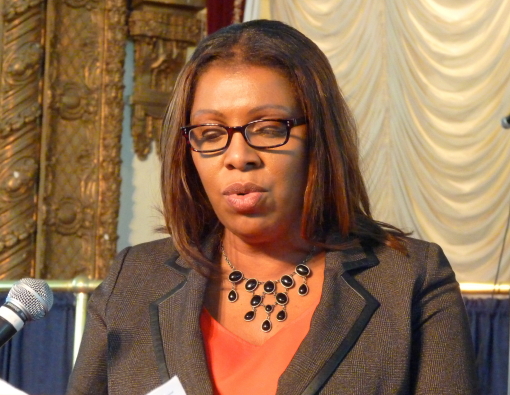At town hall, concern with Brooklyn’s health care inequities and Medicaid waiver dollars
Interfaith, LICH, Downstate, Brookdale, Wyckoff and other hospitals in trouble

Supporters of a multitude of Brooklyn’s threatened hospitals, many in Central Brooklyn, filled the pews at the Pleasant Grove Baptist Tabernacle church in Brownsville on Thursday night to discuss the fight to keep hospitals open, end health care disparity, and make sure that Brooklyn gets its fair share of promised Medicaid waiver funds.
The town hall was called by Public Advocate Letitia James, who described the inequities affecting the borough’s hospitals, and some of the underlying causes of the crisis.
In Brooklyn, hospitals typically receive only about half of the insurance reimbursement that hospitals located in Manhattan get for providing the same treatment, she said. At the same time, Brooklyn has only a third of the number of hospital beds as Manhattan per resident — roughly two beds per thousand residents, versus Manhattan’s six beds per thousand residents.

Brooklyn Boro
View MoreNew York City’s most populous borough, Brooklyn, is home to nearly 2.6 million residents. If Brooklyn were an independent city it would be the fourth largest city in the United States. While Brooklyn has become the epitome of ‘cool and hip’ in recent years, for those that were born here, raised families here and improved communities over the years, Brooklyn has never been ‘uncool’.